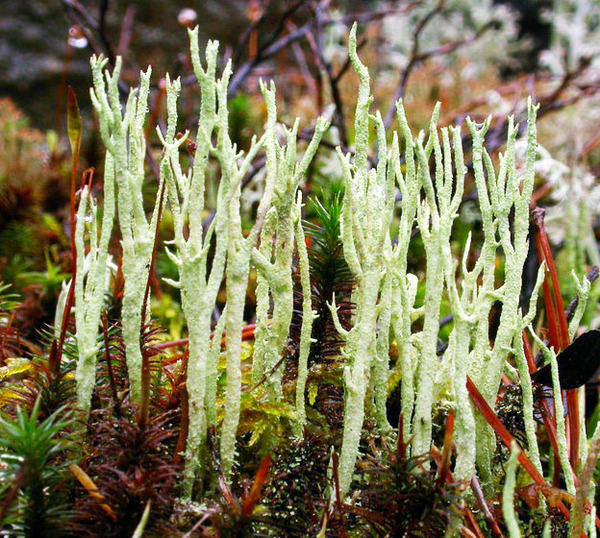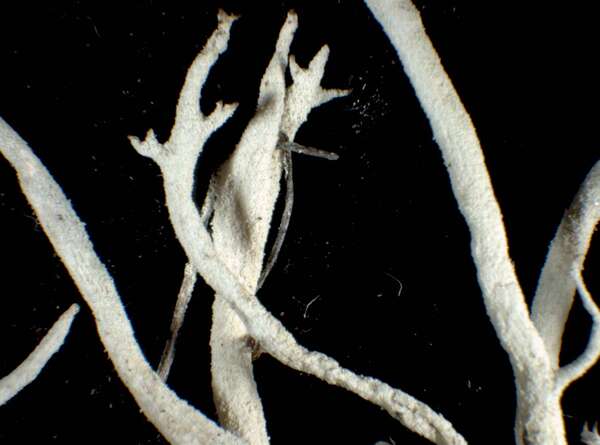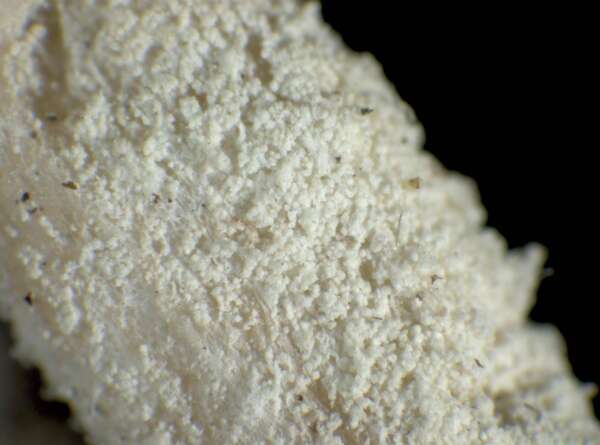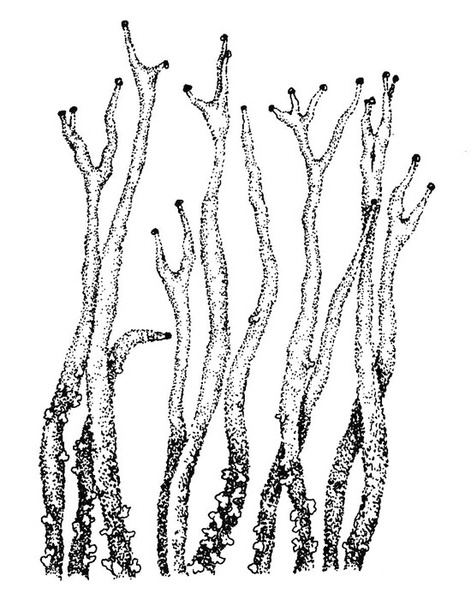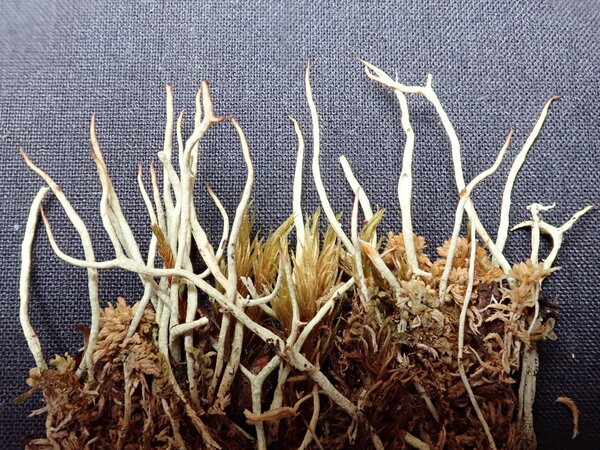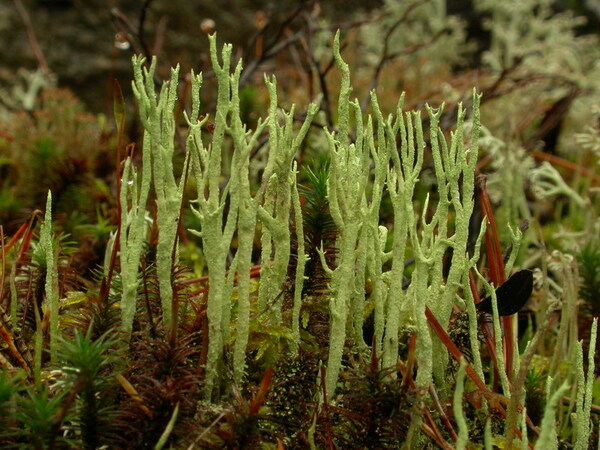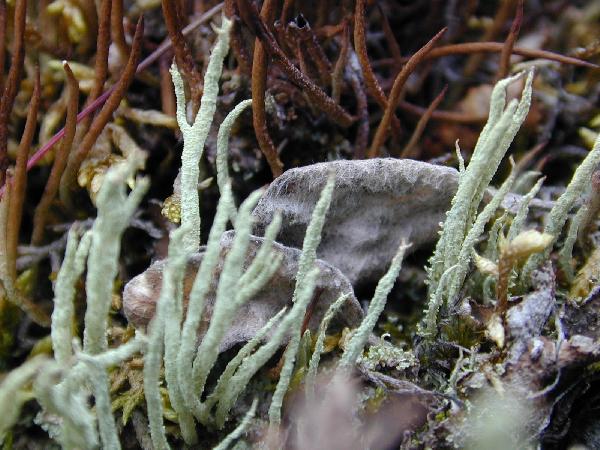Cladonia cyanipes (Sommerf.) Nyl.
Mém. Soc. Imp. Sc. Nat. Cherbourg, 5: 95, 1858 ("1857"). Basionym: Cenomyce carneopallida var. cyanipes Sommerf. - Suppl. Fl. Lapp.: 129, 1826.
Synonyms:
Description: Primary thallus squamulose, the squamules usually ephemeral, small to middle-sized, up to 6 mm long (usually much less) and c. 1 mm broad, narrowly laciniate, crenate, ascending, yellowish green above, white or yellowish-white below, the underside often sorediate. Podetia yellowish-green in upper part, greyish-green below, often with a necrotic, blue-black base, bacilliform, 2-5(-8 cm) tall, 0.5-2 mm thick, usually cupless or rarely with narrow cups, non squamulose, thin and elongate, simple or sparingly branched above, covered with farinose soredia tending to fall off easily, leaving wide naked areas. Apothecia infrequent at the tip of the podetia, very pale ochraceous brown to yellowish brown, convex. Asci 8-spored, clavate, thickened at apex, with a K/I+ blue tholus and a K/I+ strongly blue outer gelatinous sheath, Cladonia-type. Ascospores 1-celled, hyaline, ellipsoid. Pycnidia pale brown, at the tips of podetia, subcylindrical to ovoid, with a colourless jelly. Conidia hyaline, curved. Photobiont chlorococcoid. Spot tests: K-, C-, KC+ yellow, P-, UV- or UV+ faintly white. Chemistry: usnic, barbatic and 4-0-demethylbarbatic acids, and occasionally zeorin.
Growth form: Fruticose
Substrata: soil, terricolous mosses, and plant debris
Photobiont: green algae other than Trentepohlia
Reproductive strategy: mainly asexual, by soredia, or soredia-like structures (e.g. blastidia)
Commonnes-rarity: (info)
Alpine belt: extremely rare
Subalpine belt: extremely rare
Montane belt: absent
Dry submediterranean belt: absent
Humid submediterranean belt: absent
Padanian area: absent
pH of the substrata:
1 2 3 4 5
Solar irradiation:
1 2 3 4 5
Aridity:
1 2 3 4 5
Eutrophication:
1 2 3 4 5
Poleotolerance:
0 1 2 3
Altitudinal distribution:
1 2 3 4 5 6
Rarity
absent
extremely rare
very rare
rare
rather rare
rather common
common
very common
extremely common
Loading data...
Occurrence data
Predictive map
Growth form: Fruticose
Substrata: soil, terricolous mosses, and plant debris
Photobiont: green algae other than Trentepohlia
Reproductive strategy: mainly asexual, by soredia, or soredia-like structures (e.g. blastidia)
Commonnes-rarity: (info)
Alpine belt: extremely rare
Subalpine belt: extremely rare
Montane belt: absent
Dry submediterranean belt: absent
Humid submediterranean belt: absent
Padanian area: absent
pH of the substrata:
| 1 | 2 | 3 | 4 | 5 |
Solar irradiation:
| 1 | 2 | 3 | 4 | 5 |
Aridity:
| 1 | 2 | 3 | 4 | 5 |
Eutrophication:
| 1 | 2 | 3 | 4 | 5 |
Poleotolerance:
| 0 | 1 | 2 | 3 |
Altitudinal distribution:
| 1 | 2 | 3 | 4 | 5 | 6 |
Rarity
absent
extremely rare
very rare
rare
rather rare
rather common
common
very common
extremely common
Loading data...
Occurrence data
Predictive map


